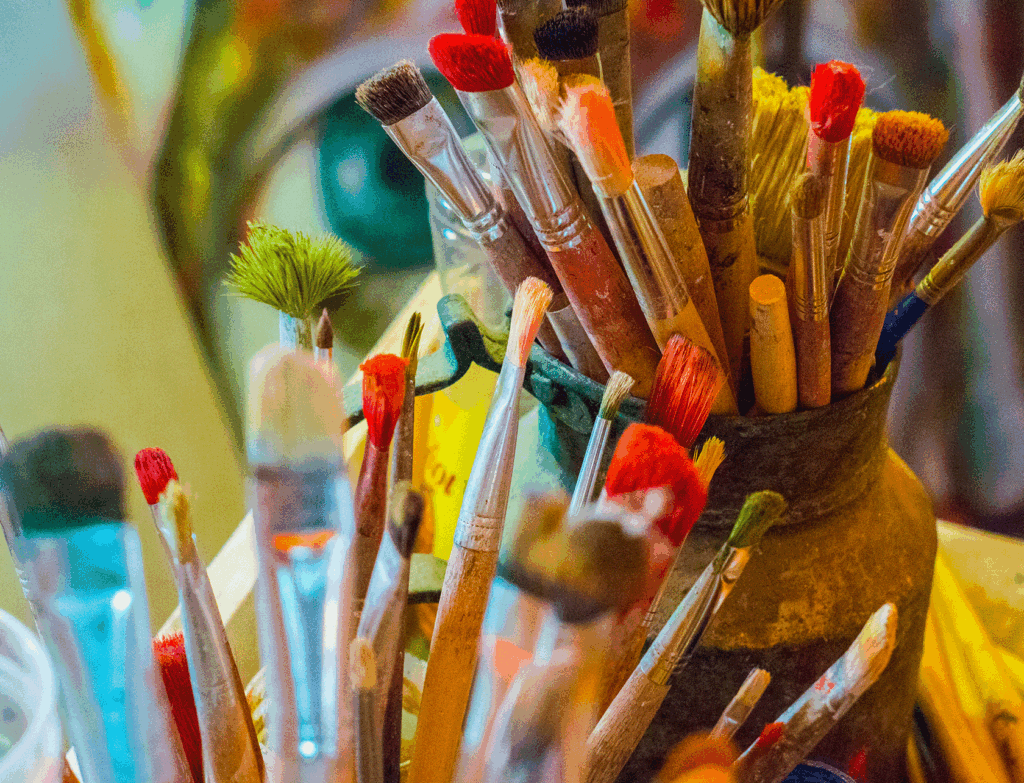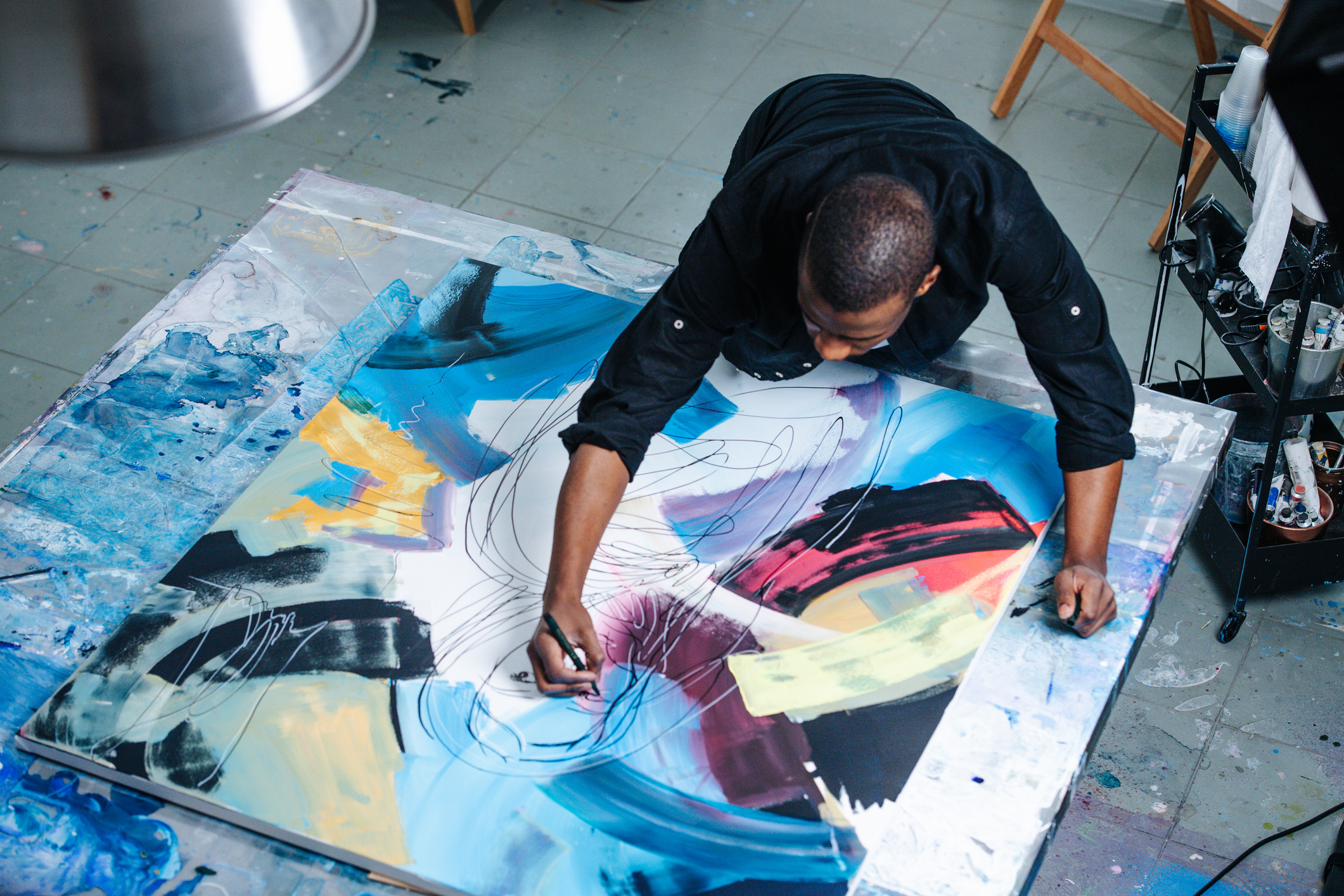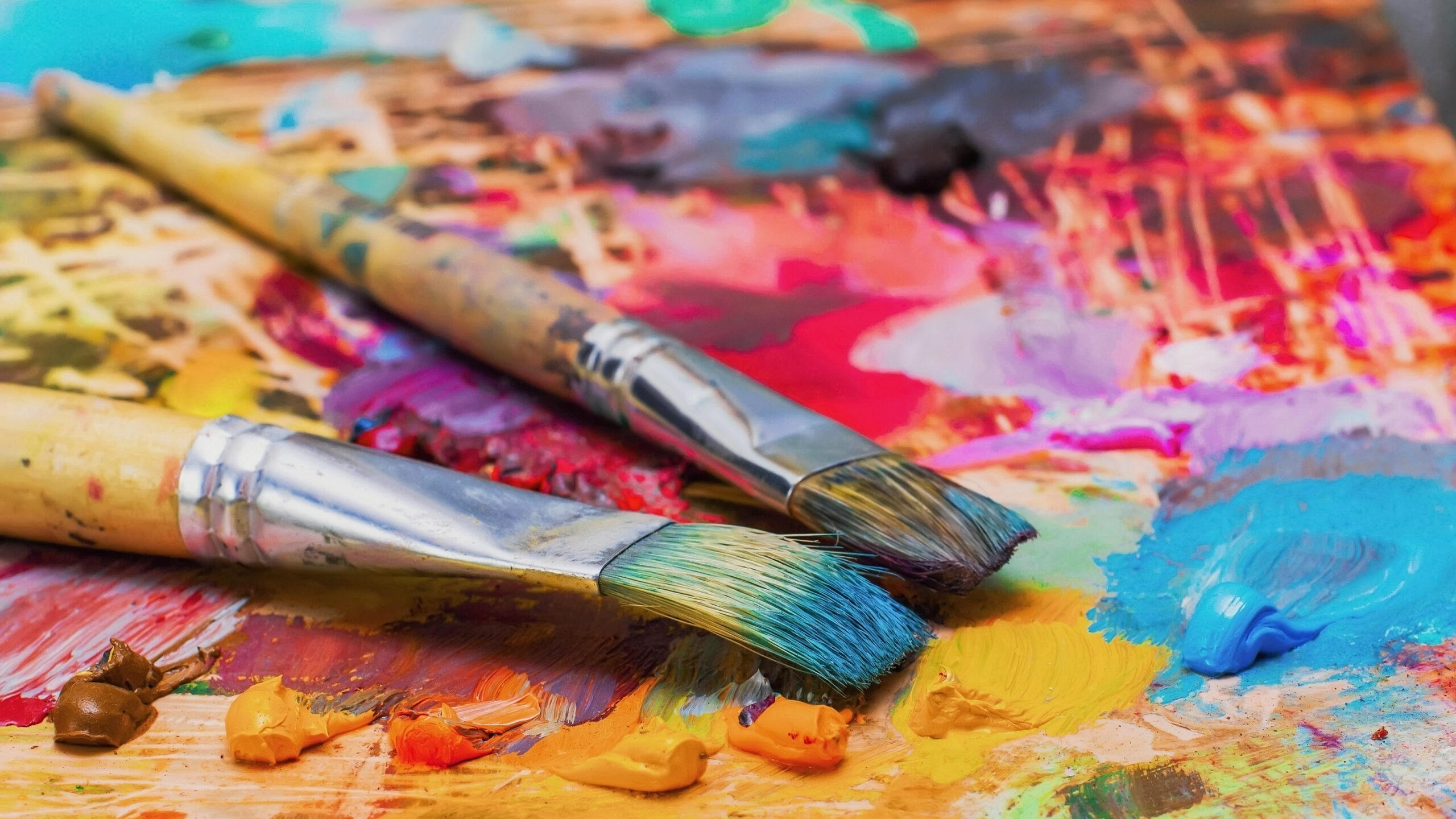Have you ever found yourself wondering if your love for art — that creative spark that just won’t leave you alone — is really from God? Or is it just some side hobby that doesn’t really matter in the grand scheme of things?
Friend, I know that struggle well. For years, I wrestled with the same questions. I thought my creativity was just a fun side note to my “real” spiritual life. I kept my art over here, my business over there, and my spiritual life tucked safely in another box. But everything changed when I realized this powerful truth: our creativity is not just a luxury or a distraction. It’s a divine gift, woven into the very design of who we are, intended to release God’s glory into the earth.
If you’ve ever felt that tension, I want you to lean in. Because what I’ve discovered — and what I now spend my life helping other artists discover — is that your creativity isn’t just nice. It’s necessary. It’s not optional. It’s not “extra.” It’s an assignment straight from the heart of God.
Created in His Image to Create
Genesis 1:27 says we are created in God’s image. Think about that! The first thing God revealed about Himself in Scripture is that He is a Creator. And because we bear His image, we carry that same creative nature. Your desire to make art isn’t something you came up with to escape life — it’s a divine deposit, an invitation to partner with Him.
Some might say, “Oh, isn’t art selfish? Shouldn’t I be spending more time volunteering or doing ‘spiritual’ things?” But friend, your art is spiritual. It’s not a distraction; it’s a powerful act of agreement with God’s design for your life.
When you start seeing your creativity as a divine assignment, everything shifts. You begin to experience the abundant life Jesus promised — not just for yourself but as a conduit for others to encounter Him.
Your Art: A Vessel of Encounter
Whether you’re painting, weaving, writing, dancing, or composing, your creative expression becomes a vessel. Just like a song can bring tears streaming down your face in the car, your artwork can become a table where the Holy Spirit meets people right where they are.
I love to say: your art is an invitation for heaven to meet earth. Romans 8:19 reminds us that all creation is eagerly waiting for the sons and daughters of God to be revealed. People are hungry for truth, beauty, and authentic connection. When you create, you’re not just making pretty things — you’re opening divine intersections where God can move powerfully.
You’re an Ambassador
2 Corinthians 5:20 calls us ambassadors of Christ. Think about an ambassador — they don’t act on their own authority. They carry the authority of the one who sent them. When you create as an artist in God’s Kingdom, you’re not just expressing your own ideas; you’re carrying His heart into the world. That’s not just a hobby — that’s a mission.
It doesn’t matter if your art “looks” overtly Christian or not. It matters that you are a son or daughter of the King. When you create, His presence flows through you, transforming lives in ways you may never even see this side of heaven.
Faithfulness Over Fame
God isn’t looking for you to be the most successful, the most polished, or the most popular. He’s looking for your yes. Colossians 3:23 reminds us, “Whatever you do, do it as unto the Lord.” Whether you’re making art part-time, as a side gig, or full-time — do it faithfully. Because in the Kingdom, growth and multiplication come from faithfulness, not hustle.
When you bring your small loaves and fishes — your little bit of art, your hesitant steps of faith — God multiplies it beyond anything you could imagine. You might feel like you’ve only got a little to give, but He turns it into an overflow that feeds multitudes.
Say Yes to the Calling
What if today was the day you stopped treating your art like “just a hobby” and started embracing it as a holy calling? What if today you gave God your yes and agreed with His design for your life?
I want to encourage you to pause right now and pray:
Jesus, thank You for creating me in Your image and for giving me the gift of creativity. Today, I say yes to Your design and calling on my life as an artist. I choose to step into this divine assignment, to create in partnership with You, and to release Your glory into the world through my art. Thank You for the freedom, favor, and opportunities that come when I say yes to You. In Jesus’ name, amen.
Friend, if you just prayed that prayer, let me know — just say “YES” in the comments. Share your story. I want to celebrate with you and cheer you on.
Remember, you were created to thrive — not just survive. You carry the Kingdom. You are an artist on divine assignment. And the world is waiting for what you carry.
P.S. If this resonates with you and you want to go deeper, I’d love for you to check out my Foundations Course for artists. It’s a powerful discipleship journey designed to help you heal, grow, and step confidently into your God-given calling.
Stay connected, keep creating, and remember — you were created to thrive.



